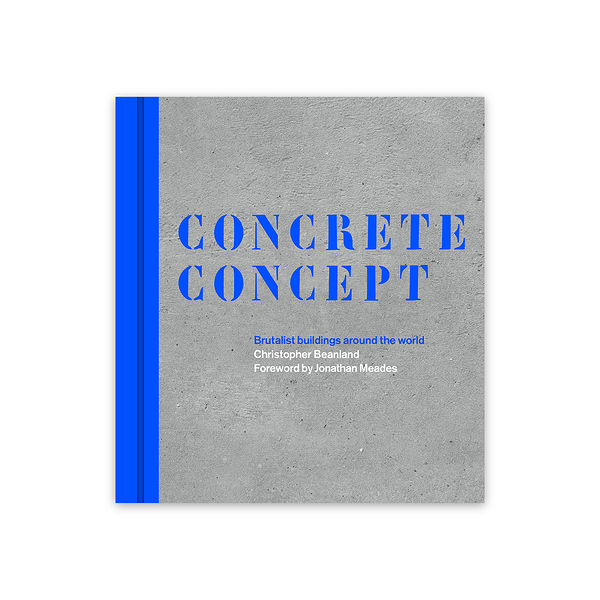Concrete Concept: Brutalist Buildings around the World
by Christopher Beanland
London: Frances Lincoln, second edition, 2021
reviewed by Alayne McGregor
The word “brutalist” is used for a style that is defined as modernist buildings, which are primarily built of concrete often with visible concrete as a major textural and design aesthetic throughout.
As this book’s introduction says, “Brutalism is about severity, abstraction, ambition; angles that promote nausea, shapes that promote dizziness, spaces that occasionally evoke terror. . . . These buildings . . . were meant to stand up to the city, to answer back to it, to challenge it: not to hammer the human.”
But “brutalist” has also become an insult that is applied to badly designed buildings from the last century. Many buildings justify that opprobrium–think of Ottawa’s current Main Library.
However, I was surprised to realize from this book is that there are many that do not.
Concrete Concept profiles 100 brutalist buildings and structures built from the 1950s to the 1980s. Most are in the UK and Europe but some are located in North and South America, Africa and Asia.
The very first is L’Unité d’Habitation (1952) in Marseille, France, designed by Le Corbusier, who originated many of the ideas of this movement. I’d call L’Unité a box with decoration, though I can certainly see some of its tropes reused many times in other buildings.
Similarly underwhelming are about half the structures shown. As an example, the Spaghetti Junction freeway interchange in Tame Valley in the West Midlands in England, the Gravelly Hill Interchange, is downright ugly.
An art museum in Sao Paulo resembles – for no particular reason – grain silos. The CCSS building in Costa Rica looks like a dirty jumble of incompatible styles, while a bank in Buenos Aires has holes in its facade and odd-looking, leaning lines. The Soviet Embassy in Havana, Cuba, looks like a cell tower writ in concrete and is downright bizarre.
On the other hand, the two Canadian entries – Toronto City Hall/ Nathan Phillips Square and Habitat 67 in Montreal – are buildings I’ve always loved for their imaginative use of space.
The Wortruba Church in Vienna is composed of vertical blocks that fit together in a structure both calm and dynamic. The rounded balconies that define the exterior of Marina City in Chicago create a unique and attractive feel to the building.
And I adored the Geisel Library at the University of California San Diego, which is built like a slightly squat tree with a rippling roofline.
So brutalist architecture, like most other styles, can be done well. It does have the advantage of allowing more experiments with shape and form. It’s reassuring to know that the result can sometimes be imaginative and very cool.
Concrete Concept is available at the Ottawa Public Library.

